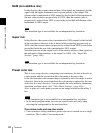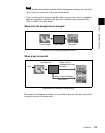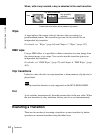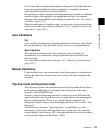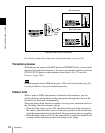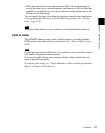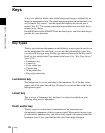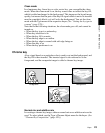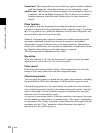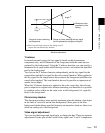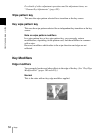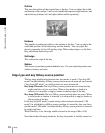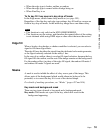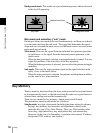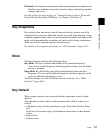
50
Keys
Chapter 1 MVS-8000 Functions
Normal mix: The foreground is cut out with the key signal, and then combined
with the background, which has also been cut out with the key signal.
Additive mix: The background, which has been cut out with the key signal, is
combined with the unshaped foreground. This is effective for a natural-
looking composite when the scene includes glass or other translucent
objects.
Plane function
In an additive mix, the foreground is not shaped by the key signal, and
variations in the (blue) background appear in the composite image. To prevent
this, it is possible to set a particular luminance level for the background, and
any parts below this level are cut forcibly.
Methods of adjusting the composite obtained from chroma keying include
automatic adjustment with the auto chroma key function, and manual
adjustment carrying out the necessary processing separately. The optimum
results will be obtained by first carrying out adjustments with the auto chroma
key function, then making any fine adjustments as required.
The following manual adjustments are possible.
Key active
When this function is off, only the foreground is output and you can make
adjustments of color cancel (see the next paragraph).
Color cancel
If the foreground image includes shades of the background color, turn this
function on to remove the color from the foreground image.
Chroma key window
You can adjust the range over which the key signal is determined as matching
the specified hue. When this adjustment is off the default ranges are used.
Chroma keying generates a key signal based on a particular color (reference
color) in the foreground (typically a plain blue background), and the “window”
refers to the range of colors which are regarded as matching this specified
reference color to create the key signal.
As seen on a vectorscope (that is, in the hue-saturation color space), the range
for this matching corresponds to a truncated sector. This range is specified by
two parameters: the “Angle” parameter, which determines the range of the hue
parameter, and the “Crop” parameter, which determines the degree of
truncation (see the following figure).



